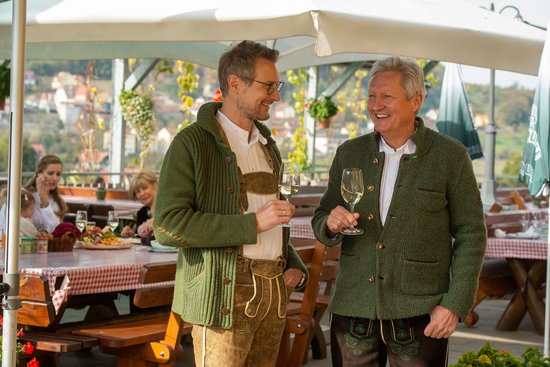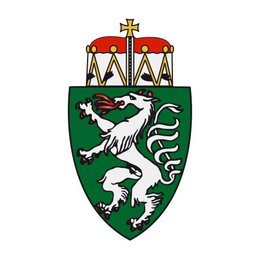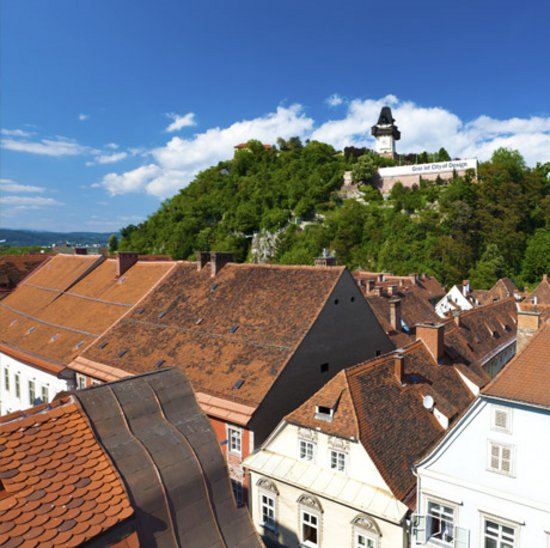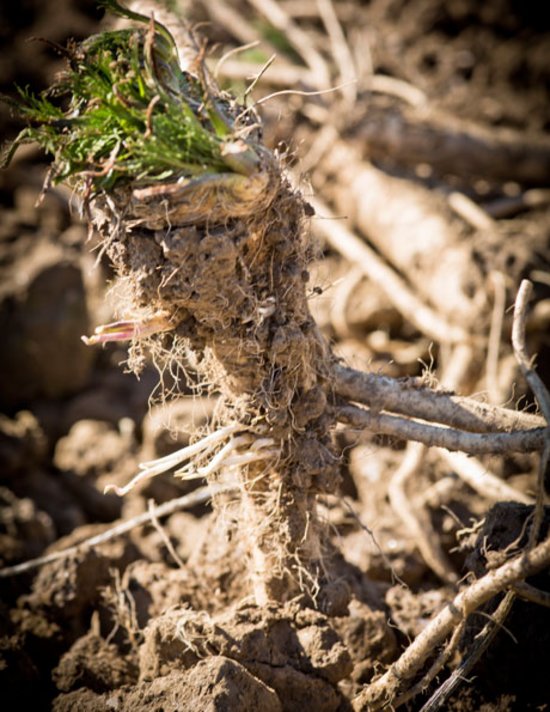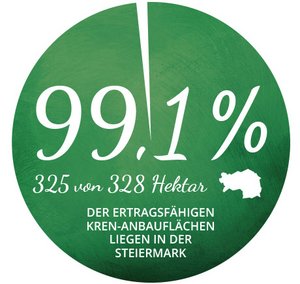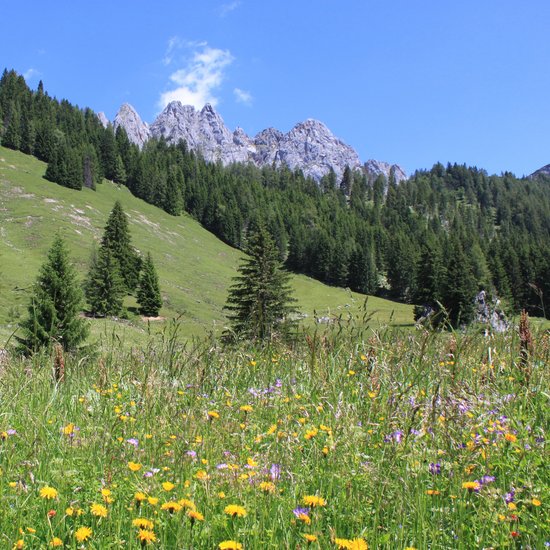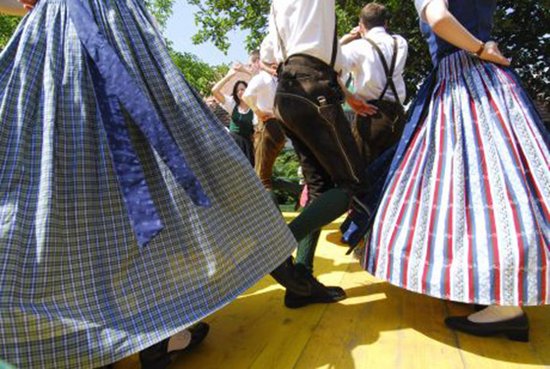Strong demand
Land and people.
The name Styria derives from the city of Steyr, situated in what is now the state of Upper Austria, and from the castle Styraburg, first mentioned in 985 and which is now known as Schloss Lamberg. Castle Styraburg was the seat of the counts of Traungau. The margraves of Steyr, descended from the counts of Traungau, made a decisive contribution to the emergence of Styria. The state’s Latin name Styria, adopted into English (the German name is “Steiermark”), echoes the shared history of the city and the state, as does their shared coat of arms.
State anthem.
We Styrians have been singing the Dachtsteinlied (“Song of the Dachstein Mountain”) since 1929. It begins with the words “From high up on the Dachstein...” and is our official state anthem. The bookseller Jakob Dirnböck (1809-1861), from the city of Graz, wrote the poem “Der Steirer Land” on the occasion of the state jubilee in 1844 and Graz’s cathedral organist Carl Seydler (1818-1888) composed a melody for it.
The Styrian panther.
"The Styrian coat of arms consists of a green shield on which a silver panther with red horns and talons is shown spitting fire." This is the description of the state’s coat or arms in the 1950 Austrian Law Gazette. But a heraldic panther had already been used by the margrave Ottakar III for the coat of arms of the House of Traungau in 1160. When, twenty years later, Styria was ennobled to the status of a duchy, the Traungau coat of arms ended up being transferred to the green margraviate.
Size.
At 16,401.04 km2, the state of Styria is the second largest federal state in Austria. The green heart of Austria borders the Austrian states of Carinthia, Salzburg, Upper Austria, Lower Austria and Burgenland.
The capital.
The state capital of Graz is located at the coordinates 47° 4′ N, 15° 26′ O and, at 265,000 inhabitants, is the second largest city in the republic. Its unique old city and Castle Eggenberg are UNESCO World Cultural Heritage sites.
The inhabitants.
Around 1.2 million Styrians live in Styria. Around 74 Styrians live2in an area of 74km2 and enjoy the unique climate which becomes positively Mediterranean towards the south.
The Styrian soil.
Styria is often colloquially referred to as the “Green Margraviate” and the “Green Heart of Austria”, because some 61% of its surface area is forested and another quarter is covered in meadows, heathland, orchards and vineyards.
Highly diverse soil types can be found in Styria. Their qualities vary greatly due to different local factors such as stone, relief, and groundwater levels. Brown earth and luvisol are typical for the warm-temperate and damp climate of central Europe. Their colour is based on its brown-black mineral content. Brown earth is the characteristic soil of mixed deciduous forest. The humidity that prevails here causes rapid decomposition of fallen leaves and the formation of a thick humus layer. These forest soils are deep and rich in nutrients. Today expansive farmland can be found in place of the mixed deciduous forests. Wherever the soil depth is not too shallow has been brought under cultivation. The shallow soils (rendzinas) of the mountainous areas with insufficient water reserves are hardly usable for humans. They are affected not just by the steepness of the mountainsides and the associated erosion processes, but also by high precipitation and low temperatures. In the marshland the soil is principally composed of the decayed remains of peat moss. The marsh soil is very acidic and poor in nutrients.
Important sights and culture.
Without question one of the most famous sights of interest in Styria is Austria’s largest Marian pilgrimage church at Mariazell. Also worth visiting are the Erzberg mine in Eisenerz, the Benedictine monastery in Admont, the Herberstein zoo, the Piber stud farm, the Dachstein mountain, the open air museum in Stübing, Riegersburg Castle, the Kulm ski-flying hill and the distinctive old town of the state capital of Graz, which is a world heritage site.
Celebrate like the Styrians.
Styrians know how to make the most of celebrating festivals – we are famous for our raucous parties and our hospitality. Highlights include the Altausee Kirtag (a church festival), the Apple Blossom Festival in Weiz, the Wine Weeks in Leibnitz and the Aufsteirern festival in Graz. Celebrate with us.
